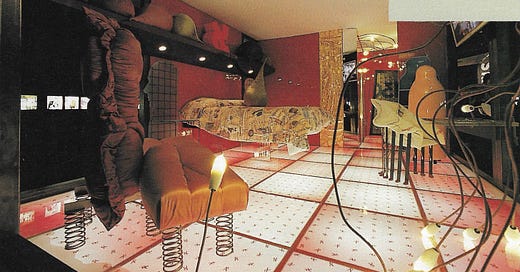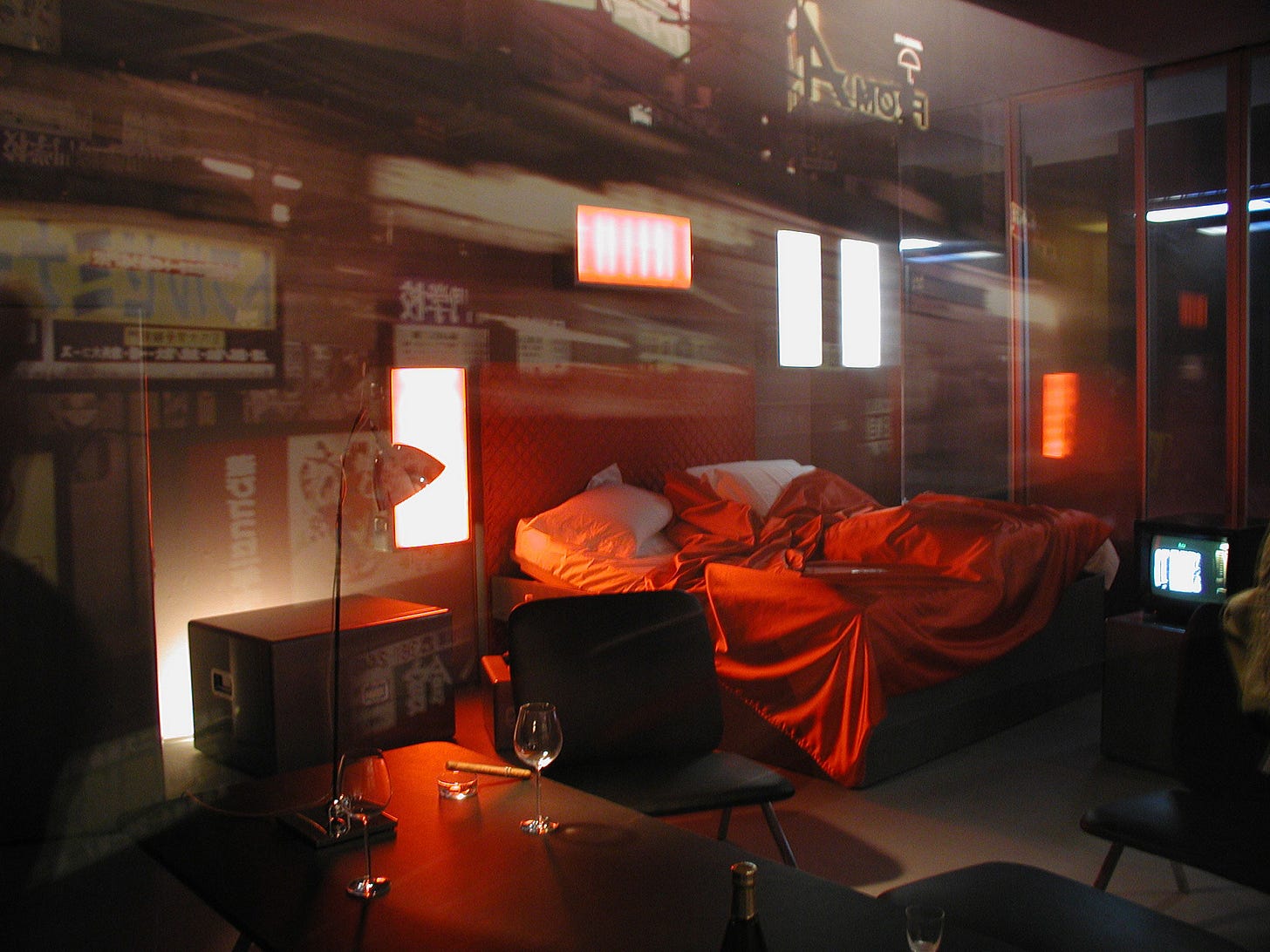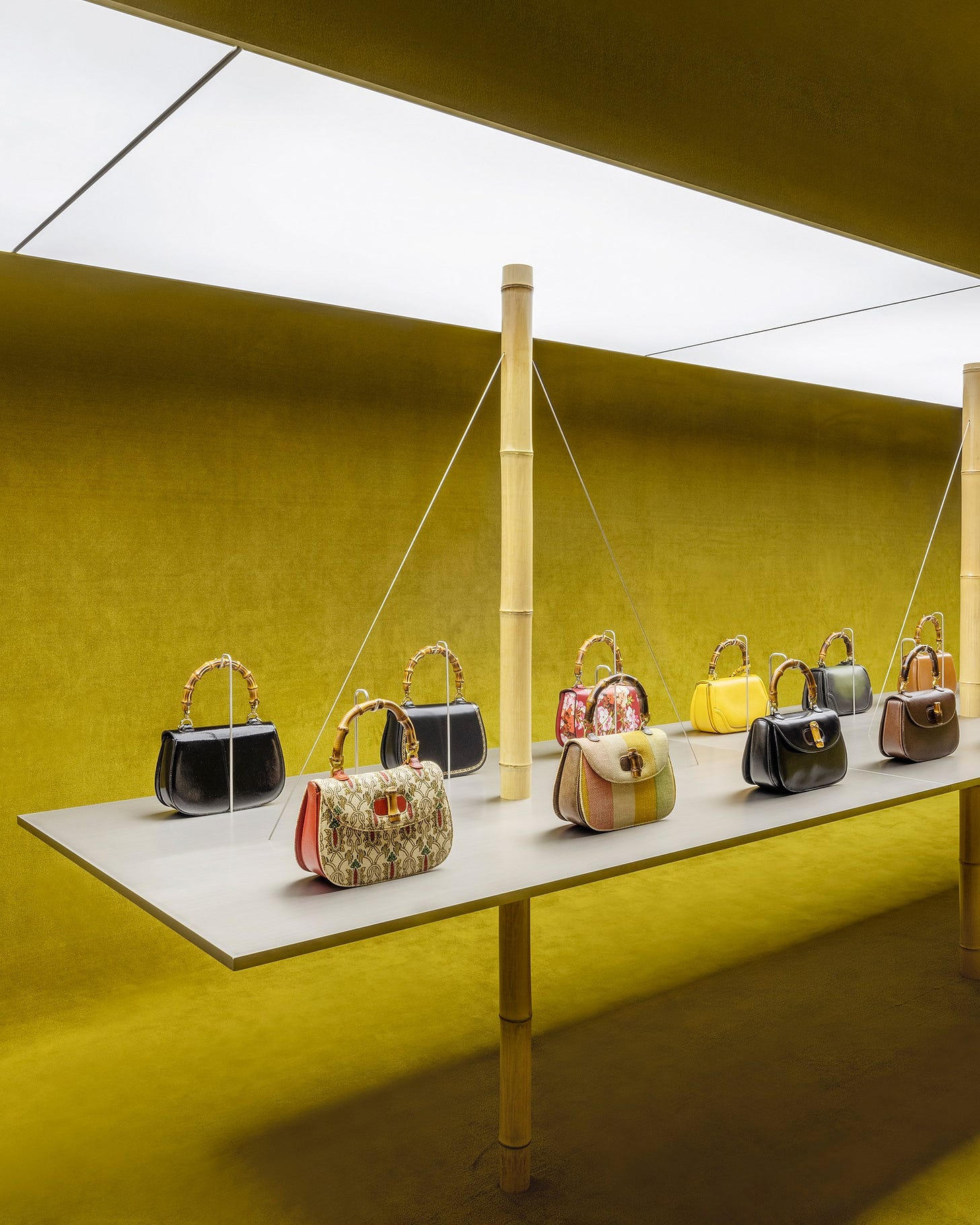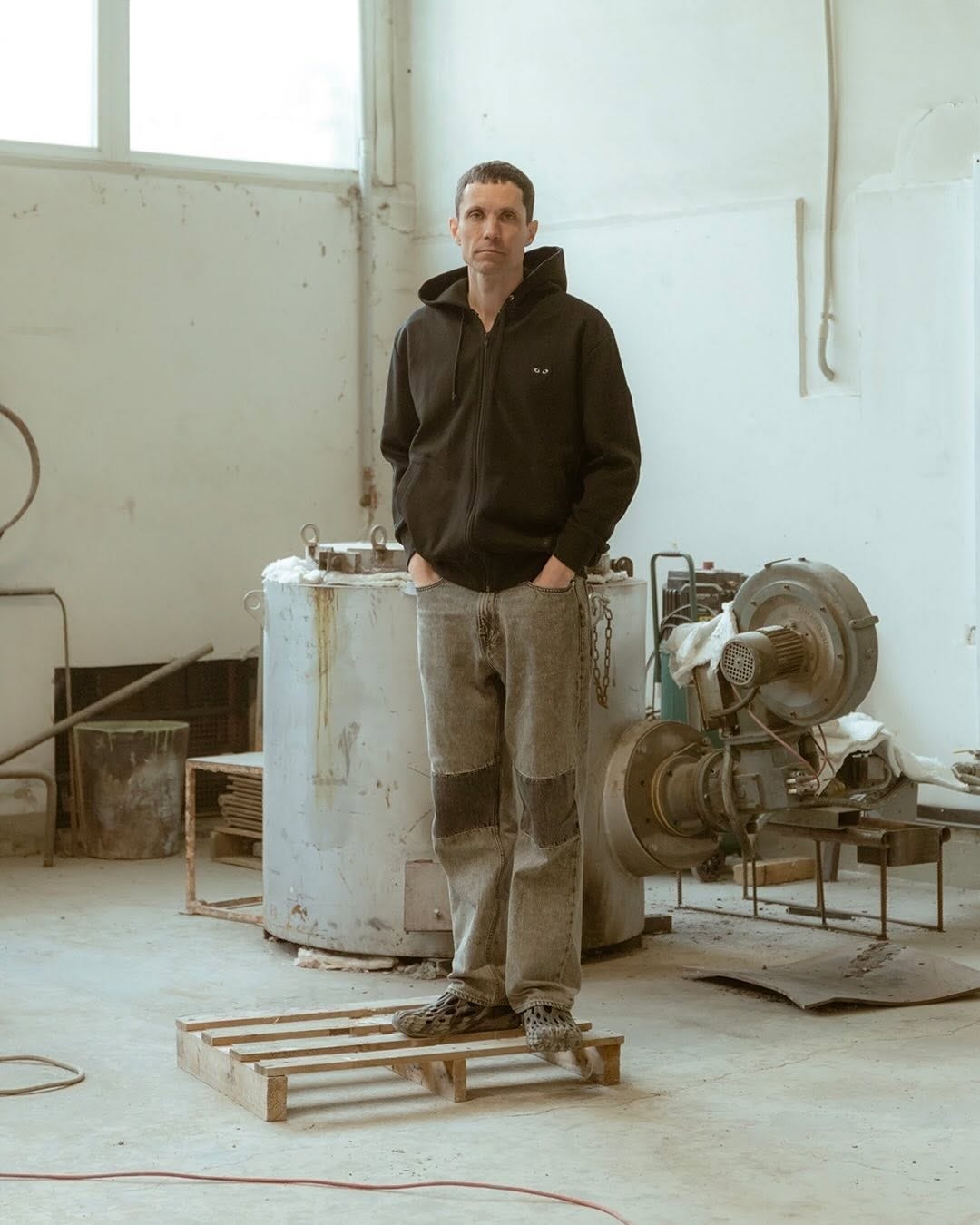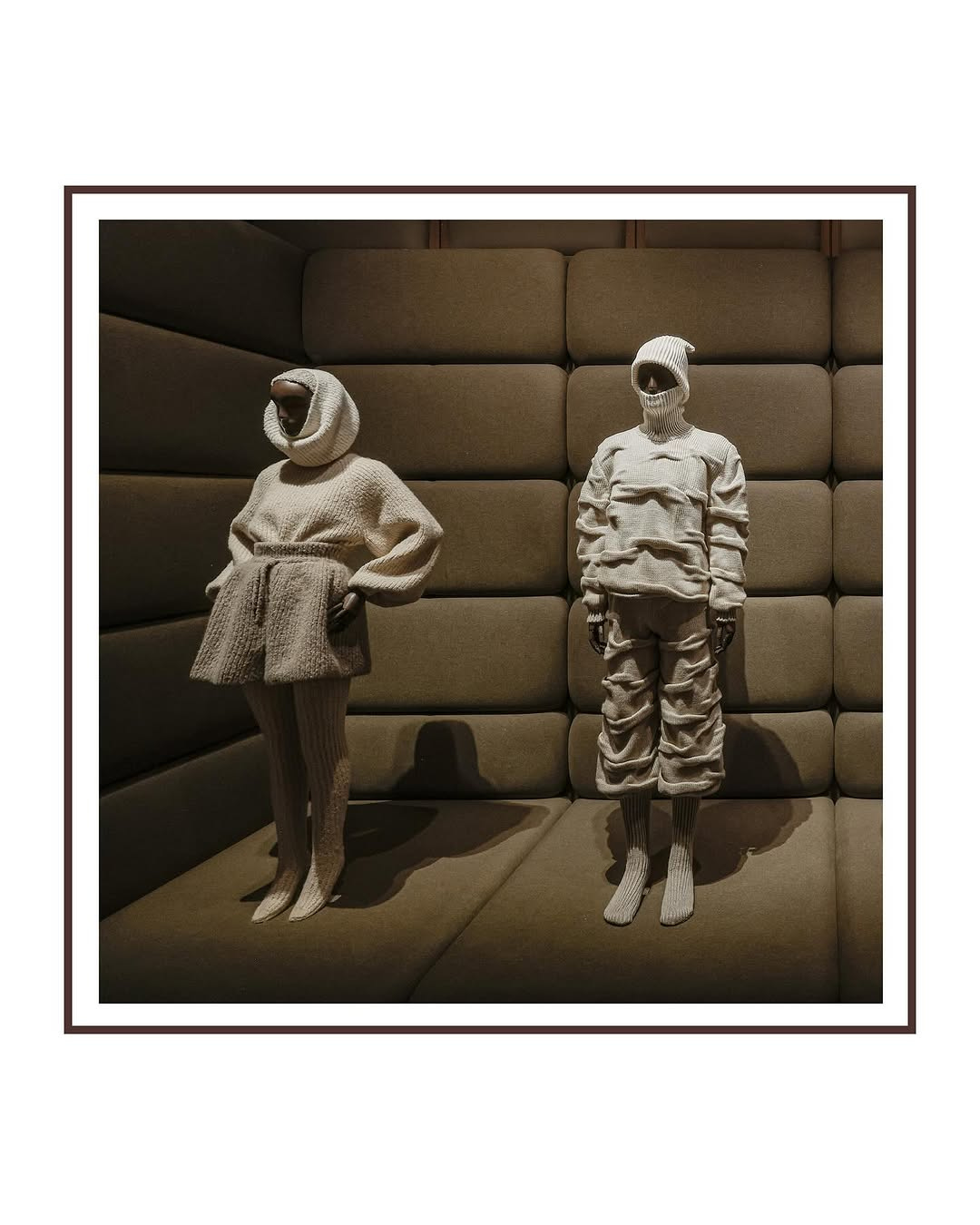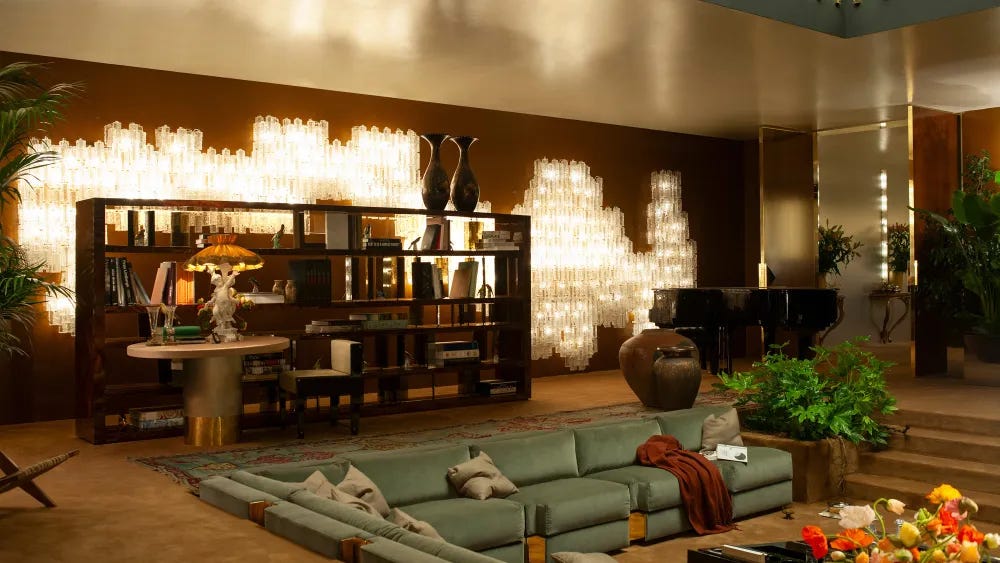Fragments Nº26: Rip It Up And Start Again
Salone Del Mobile, Exhibitions As Retrenchment Signals, The Underrated Tiffany Reboot, Post-Punk & ZTT
It's Salone Del Mobile this week, another luxury brand-a-palooza.
I've got fond memories of Salone. It's always been a place where the more cerebral end of brands can experiment. In 2002, the Product Design course at Central Saint Martins took an excursion to the Salone, our first international trip as a course. Of the (few) things I remember (there was a lot of free booze), one was the sheer scale of the proceedings and the scope of ideas that Salone could bring to life. It was thoughtful, intelligent, and challenging. One of the highlights was the "Grand Hotel Salone," where famous architects (Zaha Hadid, Jean Nouvel, Philippe Starck, Gaetano Pesce et al) took on the challenge of reimagining hotel design based on global locations.
Remember, 2002 is far from our interconnected, flattened global luxury landscape. Giving these designers the latitude to interpret and shape their responses was an interesting, bold idea. In some ways, the whole experience predicted our current collaboration and luxury experience. Not only were the 10 architects and designers given a chance to express their vision of the "hotel room of the future," but the entire experience was also supported by restaurant experiences from Fabio Picchi of Il Cibreo, Florence, Thomas Keller of The French Laundry in Napa Valley, among others.
Twenty-year-old me didn't quite appreciate that. But the merchandise, a Frette carrier bag containing the enormous book about the experience, was A+ (I still have it in a storage unit somewhere). But Milan and Grand Hotel Salone were seminal moments for me, presaging a lifelong love and affection for product, industrial, and furniture design and the thoughtfulness that great design imbues in the owner and participant. And how brands could interact with the event at large.
Luxury and fashion brands have gotten the memo.
Last year, Thom Browne and Gucci were central to the Salone experience, exploring how their brand ideas translated into product and furniture design. Ironically, Gucci's exploration remained one of the high points of De Sarno's truncated tenure. At the same time, Thom Browne's was an adept exercise in how a well-defined brand world could extend into infinite realms.
This year, brands are flooding the zone. Outlander Magazine has a great rundown of all the brand activations, from Prada running the fourth iteration of 'Frames' to Stone Island getting in on the listening bar craze with their (admittedly excellent) sound system. Marimekko has the "All the things Beddo in bed" partnership with Laila Gohar and, of course, the Saint Laurent-Charlotte Perriand (which I wrote about here), with High Snobiety also running the second edition of 'Not In Milan'.
I could go on.
While I'm sure the Puritans would consider the invasion of luxury houses distasteful, I see it differently. This gives these brands the chance to elevate their communication and context. It feels like a rare moment for these brands to educate their audience. You can't be mindless at Salone. What you make and how you make it matter more there.
This is why Gucci's return with 'Gucci Bamboo - Decoding An Icon' is so interesting.
This exhibition was most recently held in Shanghai. It brings the entire story of the Bamboo bag to life by effectively deconstructing its elements and reimagining them through 'everyday' objects. The whole experience in Milan takes the Shanghai model and ports it over. Talks, dinners, and the usual content-generating conversation-facilitating tropes that brands use will all be present. But it's also fascinating because of where it now sits in this vacuum before Demna takes over.
The Bamboo exhibition's moment comes in this strange somewhat airless space between 'visions'. In that vacuum, craft, and heritage become metaphorical anchors. The exhibition explicitly relays this reality. In one room, they 'recreated' the GucciArtLab in Florence or broke down the bag into its constituent parts. The origin of the bag is in itself deconstructed. Finally (in the 7th room), showing up as expensive Gym equipment. (It looks better than it sounds.) These rooms sit alongside the multiple recreations and reinterpretations of the bag from global and local artists.
Gucci didn't stop there. They followed up on this enormous effort and investment with an equally lavish but focused attempt to make the Gucci Scarf once again an object of desire.
For Salone, the brand has gone even further into design and craft. Profiling the design collaborators themselves. The net effect is that the entire experience feels more like something from Rimowa than De Sarno's (or Michele's) Gucci.
After last week's economic shotgun to the face, alongside China's challenges, this reads as a retrenchment to education and inspiration rather than gloss and flash. (The Bamboo has also had a low-key role in The White Lotus) It is a palate cleanser, but it may also be necessary to create a bridge between different visions to remind people of the fundamentals. Gucci keeps the wheels greased through core products and drives intrinsic value.
The recent Loro Piana exhibition (also in Shanghai and brilliantly named ‘If You Know You Know’) has taken a similar tack. The exhibition brings the brand closer to its Chinese “connoisseur” and “expanding upon Loro Piana’s cultural narrative.”
Expanding further upon that idea is CEO Damien Bertrand.
“When you do an exhibition, you can stay five hours, or as long as you want — we really want people to take the time to understand what Loro Piana is.”
While the statement might be comically obvious, it holds the essential truth of why these brand exhibitions are worth it, especially when grounded in classic or iconic products. It's no surprise the Loro Piana followed up their Shangahi IYKYK moment with their esoteric echo to Grand Hotel Salone. Unveiling and Immersive Installation With Dimoremilano inside their Milan Headquarters. A demonstration of the brand's ability to shapeshift into interiors seamlessly. But also similar to how Salone presented itself 23 years ago. An immersive world. This time, it is a recreation of an apartment that wouldn't be out of place in a classic Giallo film. A space where you can escape and disappear.
These types of projects allow the brand's most accessible ideas to be supersized, as befits the brand's size and scale. They make the most entry-level pieces feel as important and impactful as the other, shinier objects around the brand. It's both grounded and tangible, wonderous and aspirational. Whether at or around design fairs or in traveling exhibitions, it's an effective (if expensive) way of delivering the brand.
The Versatility Of The Product Pyramid
I've been impressed with Tiffany's flurry of new ideas in the last few weeks, notably for demonstrating the value of a nuanced approach to tackling the various elements of the product pyramid.
In contrast to Tiffany's somewhat chaotic approach from 2019 - 2022, there's been a notable shift to aesthetic and messaging discipline, grounding the brand back in its fundamentals beyond simply Tiffany Blue. You can see the results of this, especially on social media. That focus is notable when you look at the three most recent campaigns, dropping one after the other for the brand.
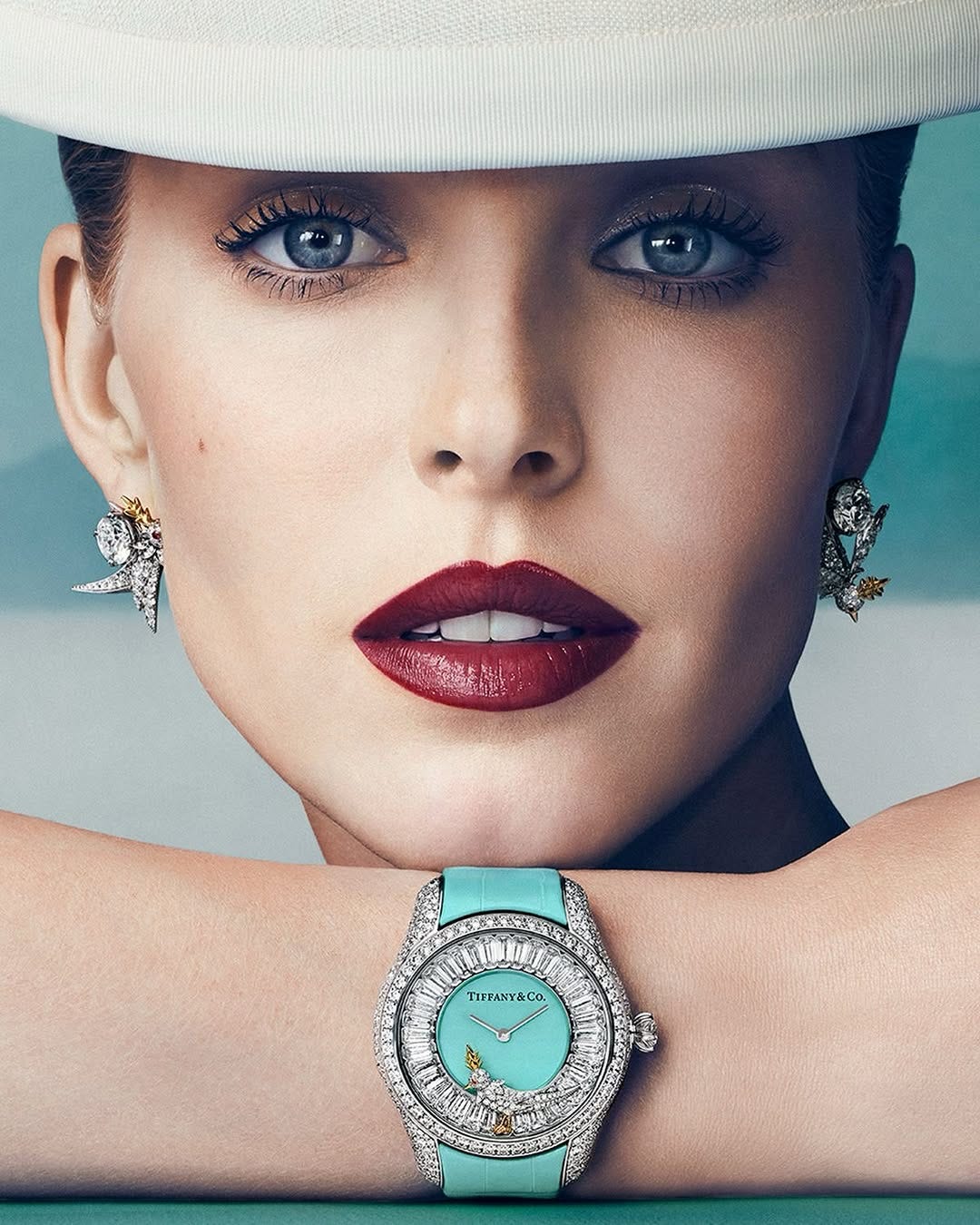
For Fine Jewelry (the top of the product pyramid), the brand leaned on its visual and conceptual heritage to tell the story of Jean Schlumberger, one of Tiffany & Co.'s first high jewelry designers. The reinterpretation of a recurring motif (The Cockatoo from 1965) becomes a through line of the designs, enveloping watches and jewelry.
This is where Tiffany's approach to heritage kicks into high gear—tapping back into the archive to show the inspiration but working with contemporary creators to build something new and familiar. It's a lineage rather than an evolution, a point reinforced by the creative partner in Atelier Frank Durand. The concept is structural and focused. The implied? The cost is on the page - this is a Tiffany of Dreams, the Holly Golightly brand version.
'Hardwear' helps broaden that dream into a more tangible reality. It's aspirational accessibility, with cultural relevance at the forefront—even down to the casting (youthful relevance but not buzz for buzz's sake like Beyonce and JayZ) and creator (Harley Weir). The result? A campaign that, while traditional, is also relevant. The three women (Mikey Madison, Greta Lee & Anna Weyant) speak to different audiences in various contexts, but also feel like women who would wear the hardware in real life and the world. It's fine jewelry for the everyday.
It might be grounded in stories of quotes, such as "personal definitions of strength, celebrating the symbolism of the collection and Tiffany & Co.'s deep connection to empowerment and love." It's also about the brand itself, gravitating back to one of its strengths, its veneer of attainability. The product pyramid is in action, and the brand's aesthetic language flexes accordingly.
The condensed nature of the three campaigns landing almost simultaneously demonstrates the value of the product pyramid as a structured creative system. Everything exists for a reason without undermining different parts of the brand. The result? In a brand world system, even the most traditional campaigns and straightforward ideas are lent a stature and consistency. The days of Tiffany chasing trends to satisfy a playbook are over, and it's all the better.
That blend of clarity, intentionality, and bravery creates the environment for interesting cultural experiments. Hallmarked by the recent Tiffany Blue Conservation idea.
Why brave? Well, that comes as much from the ability to commission and execute spec work. This idea from L&C New York brings the most precise insight around the Tiffany Blue® Pantone 1837 to life as a moment to celebrate Tiffany's & Co Foundation's platform and work. Naturally, because it's Tiffany, the scale the brand can deploy makes the job more impactful and ultimately effective because the observation is in plain sight. It's another example of the brand as hard power—monolithic. But with a genuine intention underpinning it.
Unlike the hit-or-miss explorations at Vuitton, that monolith underscores the difficulty of pulling off this discipline and working that nuance up and down the product pyramid. Tiffany might not make the headlines it did when LVMH first bought it. But its quiet, steady nature and inevitability have stood it in good stead, allowing it to flex muscles for the right audience at the right time when needed.
A Post-Punk Primer
The last few weeks have been devoted to the sounds of post-punk and new pop, wonderfully documented by the titan of music critics as a narrative story, Simon Reynolds. For those who don't know, Reynolds has written three of the most definitive books on music moments and the subgenres, twists, and turns that were spawned: Energy Flash, Shock And Awe, Futuro Mania, and Rip It Up And Start Again.
Each one is worth your time, and embarrassingly, I'd forgotten that Rip It Up is 20 years old. But Reynolds' writing remains evocative, bold, and remarkably detailed. The ability to weave between these different worlds, from PIL (Public Image Limited) to the new pop standard bearers of the Human League, all the way to the 'total pop concept' that was ZTT Records, is an absolute joy to dive into. Hence, the best way to experience the books is through audio and to stop and listen as each chapter unfolds. (For those inclined, here's the accompanying Spotify playlist).
The book charts so many disparate scenes that it can be somewhat overwhelming, with some strange choices along the way (the downtown NYC interviews chapter is probably better covered in 'Life And Death On The Dancefloor - another essential music book). But the overall takeaway is one of extraordinary flair, verve, and creative craft from a generation of musicians and creators who were able to chart vivid creative innovations. You might not like all the music, but you can only come away with a staggering amount of respect for what these people made.
And what a wonderfully apt and fortuitous idea Orange Juice's headline track remains.
More next week. (It will be shorter, I promise).

